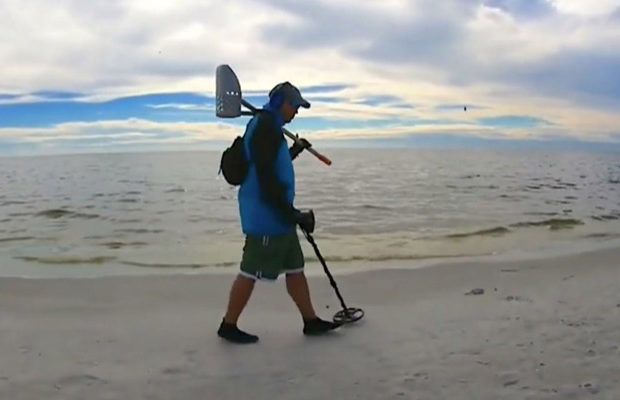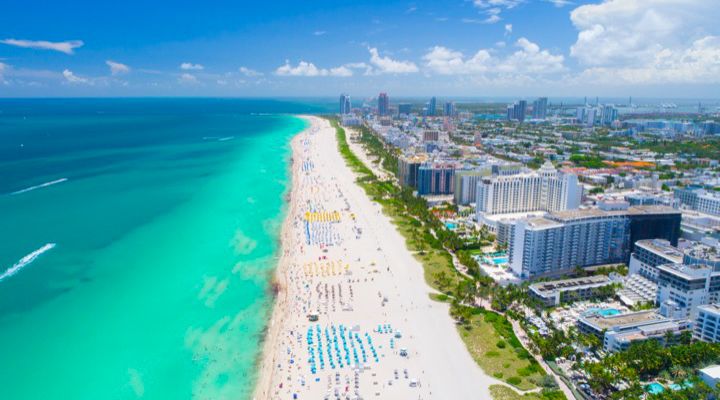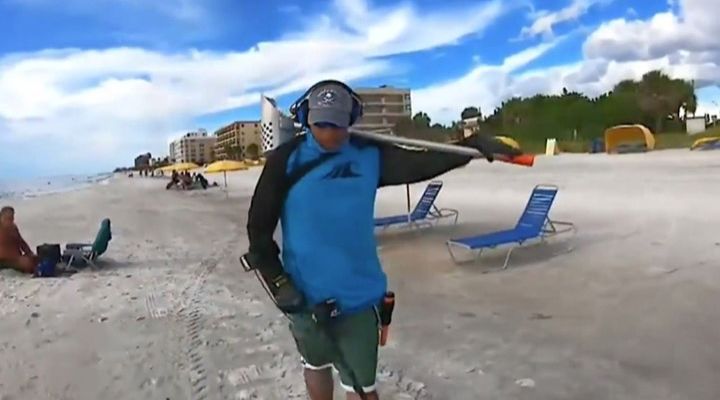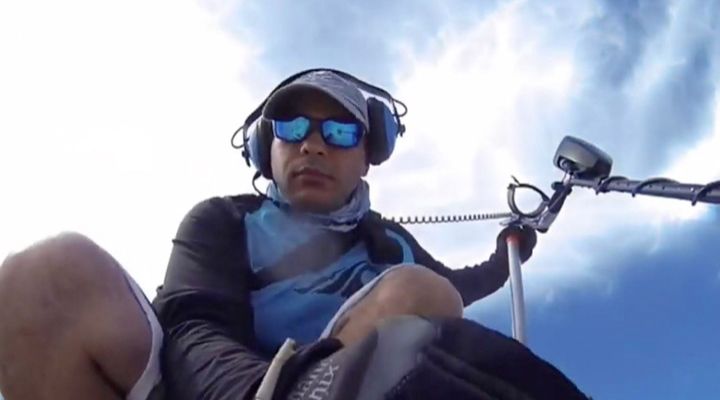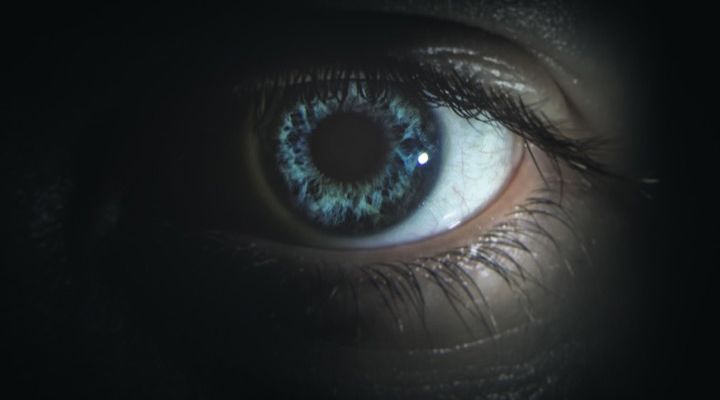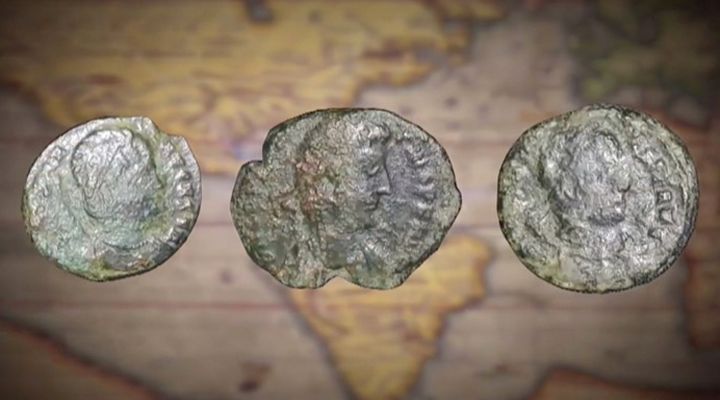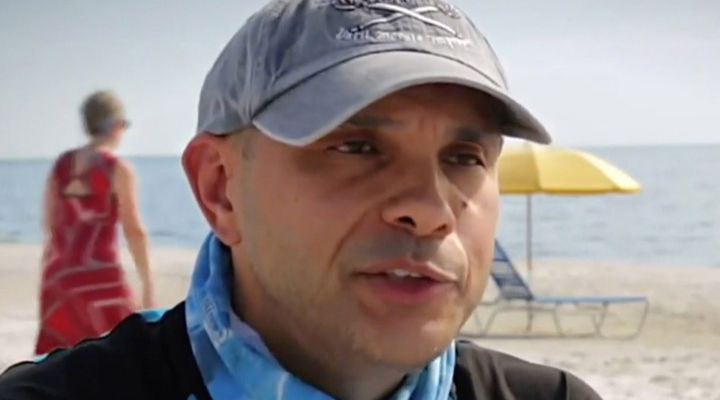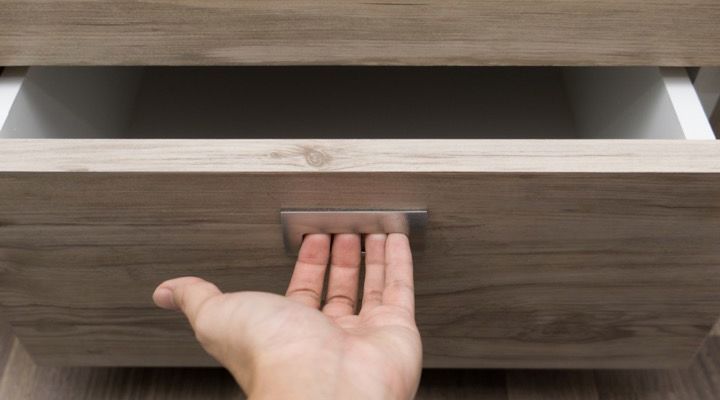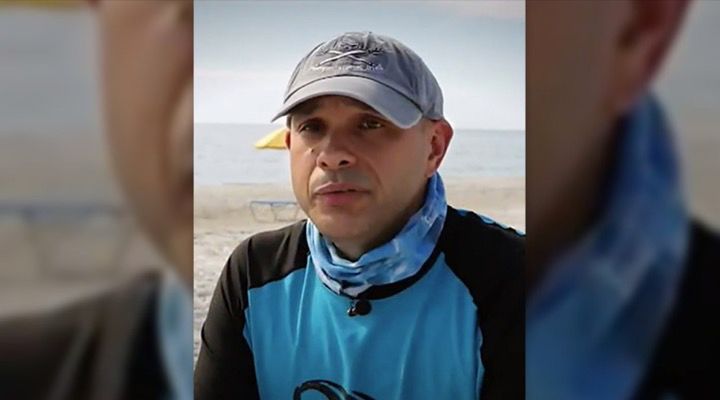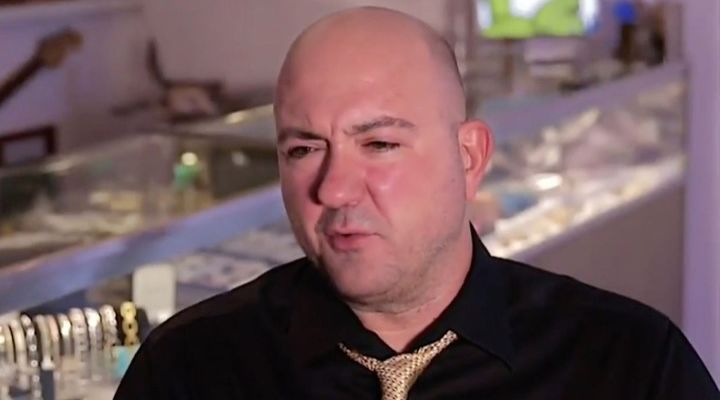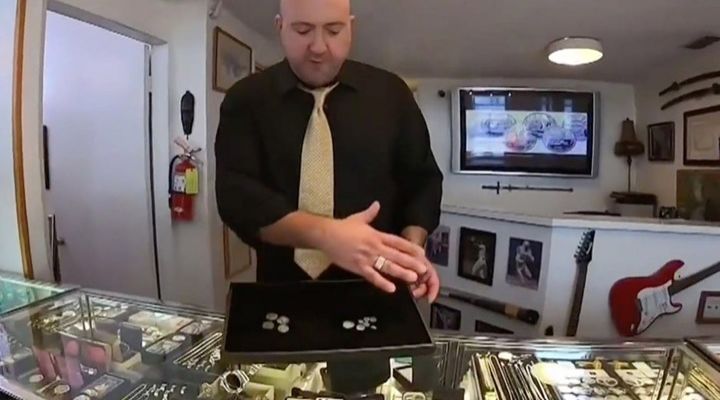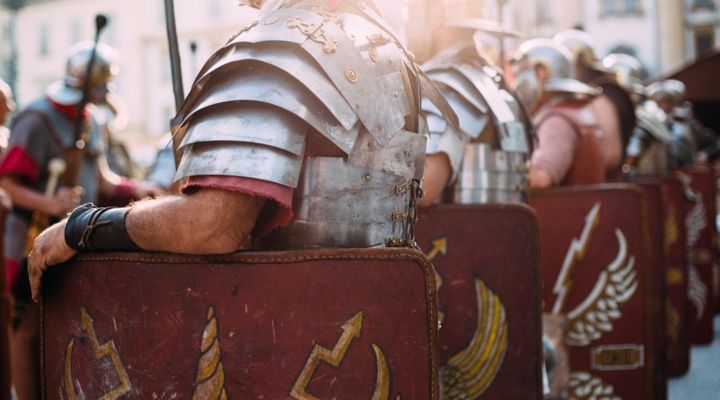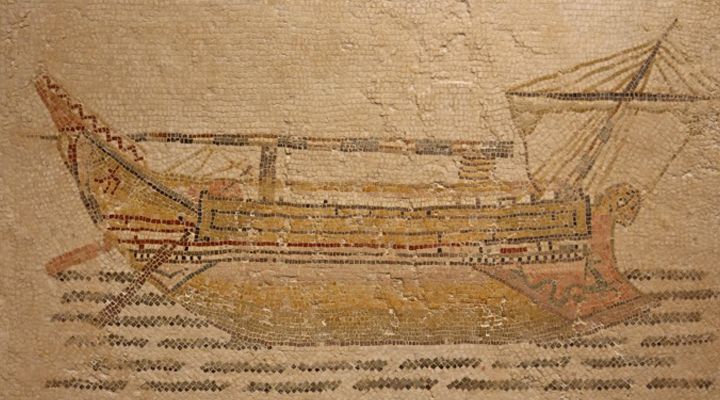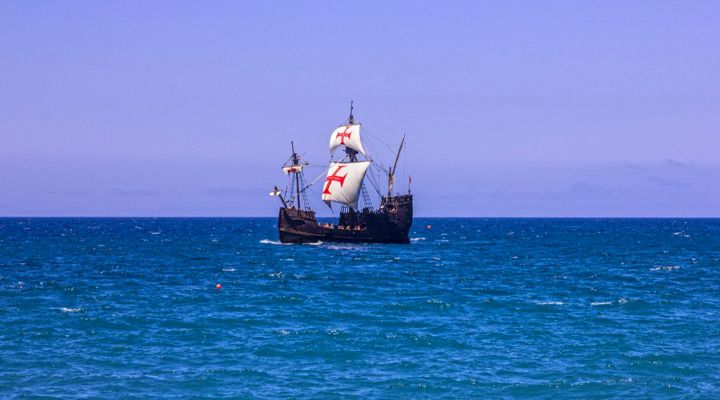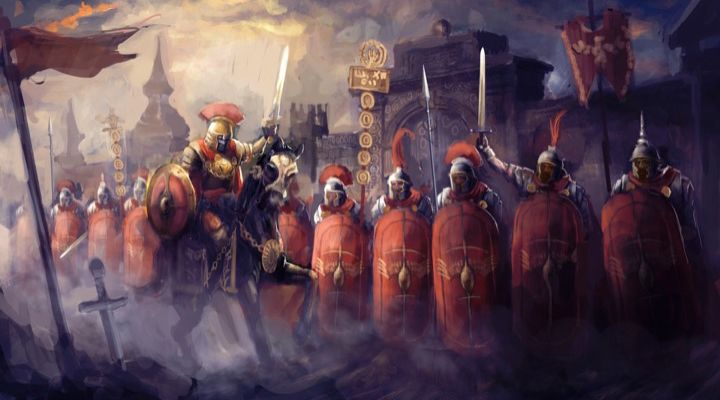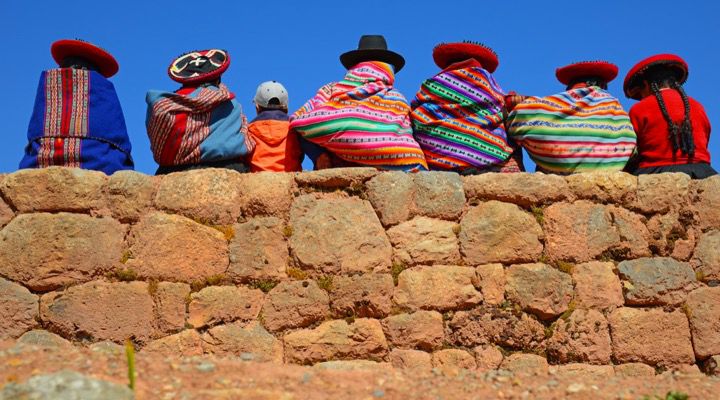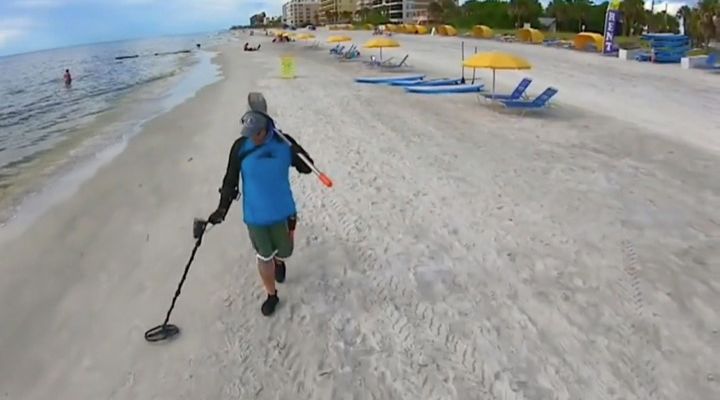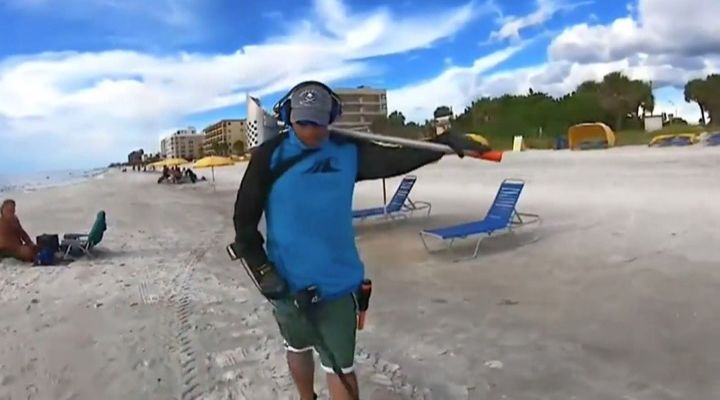You never know what you’re gonna find on the beach. Most of the time it’s a bunch of overweight people sweating and trying to get a tan, screaming kids, and greedy seagulls, but for a chosen few beachgoers, the real treasures lay below the sand.
These people, armed with metal detectors and a dream, hit the beaches regularly in search of real, honest-to-goodness, buried treasure. Holidays, in particular, are a real good time for those who wish to find treasure beneath the Floridian sands. These days, it seems like Frank Abreu is forced to agree…
Average Scavenger
It was an ordinary morning for amateur treasure hunter Frank Aberu. It was May and many folks had come down to the sunshine state in order to take a little sun and enjoy the surf. Frank was an avid scavenger and he knew as well as anyone else that more beachgoers meant more misplaces treasures.
Beachcombing
Most days, all Frank could find were rusted pennies, broken sinkers, bottle caps, and the occasional piece of basically worthless jewelry. Beachcombing is not for the impatient. Like so many things, it’s a numbers game. The more time you put in, the more miles of beach you comb, the more likely you’ll be to find something valuable.
Eighteen Targets
As usual, Frank donned his beachcombing gear and trusty metal detector and made the long, arduous walk across the Tampa sands. By the end of the day, Frank had found 18 “targets” and had placed them in his pouch. Afterward, he cleaned off the sand, went about the rest of his business, and went home.
Inspecting the Haul
Frank cleaned himself up a bit more and sat down to inspect the small, metal items his metal detector had led him to. At first, he wondered if the coins were little more than just foreign currency some tourist had lost from their wallet. As he brushed away the dirt and sand, he noticed something strange.
Centuries Hence
Not all eighteen items in his pouch were treasures, of course. That would be a most uncanny find indeed, but three of the coins therein did bear some unique markings. They were old, possibly even centuries’ old and looked to be of Roman origin. Frank wondered where they had come from.
Probably Fake
Frank was almost certain that the coins were fakes. Nobody in their right mind would possibly have left such rare coins on a Tampa beach if they weren’t forgeries. “I was just telling myself those coins, they’re probably fake or somebody must have left them there,” Frank explained to Fox13. Still, he wasn’t about to throw them away.
Keeping it Secret
Several months passed and Frank put the coins into the back of his treasure drawer. If they were fake, there was no reason to go and post anything about them to his fellow treasure hunters. The thought that they might actually be real gnawed at him, though. What if they were worth something?
Discredit
Frank’s only concern was that the coins would indeed be fake and that someone might try to discredit the find. If he made the claim and didn’t get any evidence to back it up, some people could bring that to the media’s attention. Frank decided to bring an expert in to help him discern the truth about the coins.
The Gold Spot
Every treasure hunter, amateur or otherwise, should have someone who knows a thing or two about the appraisal. Luckily for Frank, he knew somebody who would be honest enough to tell him the truth. He called his friend, local coin collector and dealer Eric Davies who owned The Gold Spot in Pinellas Park.
Probably Copies
Eric, who was understandably cynical, prefaced their discussion by telling Frank that the coins were probably copies. “They’re probably copies, I don’t know that these are authentic,” he explained. Nevertheless, he told them to bring them in so that they could take a look and maybe work something out. He never expected the truth.
Very Likely Real
Despite his misgivings, it only took one look for Eric was sold on the authenticity of Frank’s coins. “I took a very close look under the microscope and indeed, I’d have to say 85-90 percent authentic Roman coin,” he attested. Frank was bowled over. He’s never been so lucky in all his years of beachcombing.
Roman Currency
For most of Roman history, their currency consisted of coins made of several types of common precious metals. The most common coins were made gold, silver, bronze, orichalcum, and copper, but changes in denomination and composition changed with the evolution of the Roman Republic in later years.
Seven Treasures
By the time Frank had gotten up the courage to seek out expert opinion, he’d found seven coins in total. All of them were found on the same beach, but it was a beach he wasn’t about to disclose; not when he’d so far been the only one to find these remarkable Roman treasures. He wasn’t about to risk a scavenger frenzy.
Historic Implications
In Frank’s mind, the historical implications of the discovery were far more important than the potential value of the coins themselves. In his mind, and in the minds of many others, the presence of those coins meant that the Romans could have been in the United States centuries prior to Christopher Columbus.
Pre-Columbian
“The implications that there could have been Romans here in the United States prior to Christopher Columbus is crazy,” Frank explained. “If that can be proved or if someone can tell me how these coins got here that’s really what we need to find out.” Odd as this may seem, there have been discussions about Pre-Columbian trans-oceanic contact theories for years.
Proven
These theories relate to visits or interactions with the Americas and/or indigenous peoples of the Americas by people from Egypt, China, Europe, Oceana, India, Japan, and the Middle East. All of these long before Columbus’s first voyage in 1492. Some of these have been proven, at least in the cases of Norse settlements dated 500 years before Columbus.
Other Travellers
There are also links to racial similarities between people in other nations and Native Americans. People have even found links in culture or mundane things like sweet potatoes and the chickens, both which originated in the Far East but somehow found their way to the Americas. And now, thanks to Frank and Eric, there are the coins.
Detective Frank
Currently, Frank Abreu is working to find out the true intrinsic and historic value of the coins he discovered. Despite Eric’s affirmation of their authenticity, this is still a mystery centuries in the making. Frank is determined to solve it though and will continue to search for even more treasure in the meantime.
Other Discoveries
Frank Abreu isn’t the only Floridian treasure hunter in recent years to discover a valuable treasure trove beneath the sunshine state, however. Fellow treasure-enthusiast, Eric Schmitt, has metal detector that is a bit more advanced. It’s able to locate treasure miles beneath the ocean’s surface.
The Worth
When he heard a ping about 15 feet down, he didn’t think he’d found much. However, Schmitt ended up finding a sunken cache of 52 gold coins from 300 years ago. These coins together were worth more than a million dollar. The star of the entire haul was an extremely rare coin known as a “Tricentennial Royal” minted in 1715; something Eric Davies would no doubt love to get his numismatic hands on.
